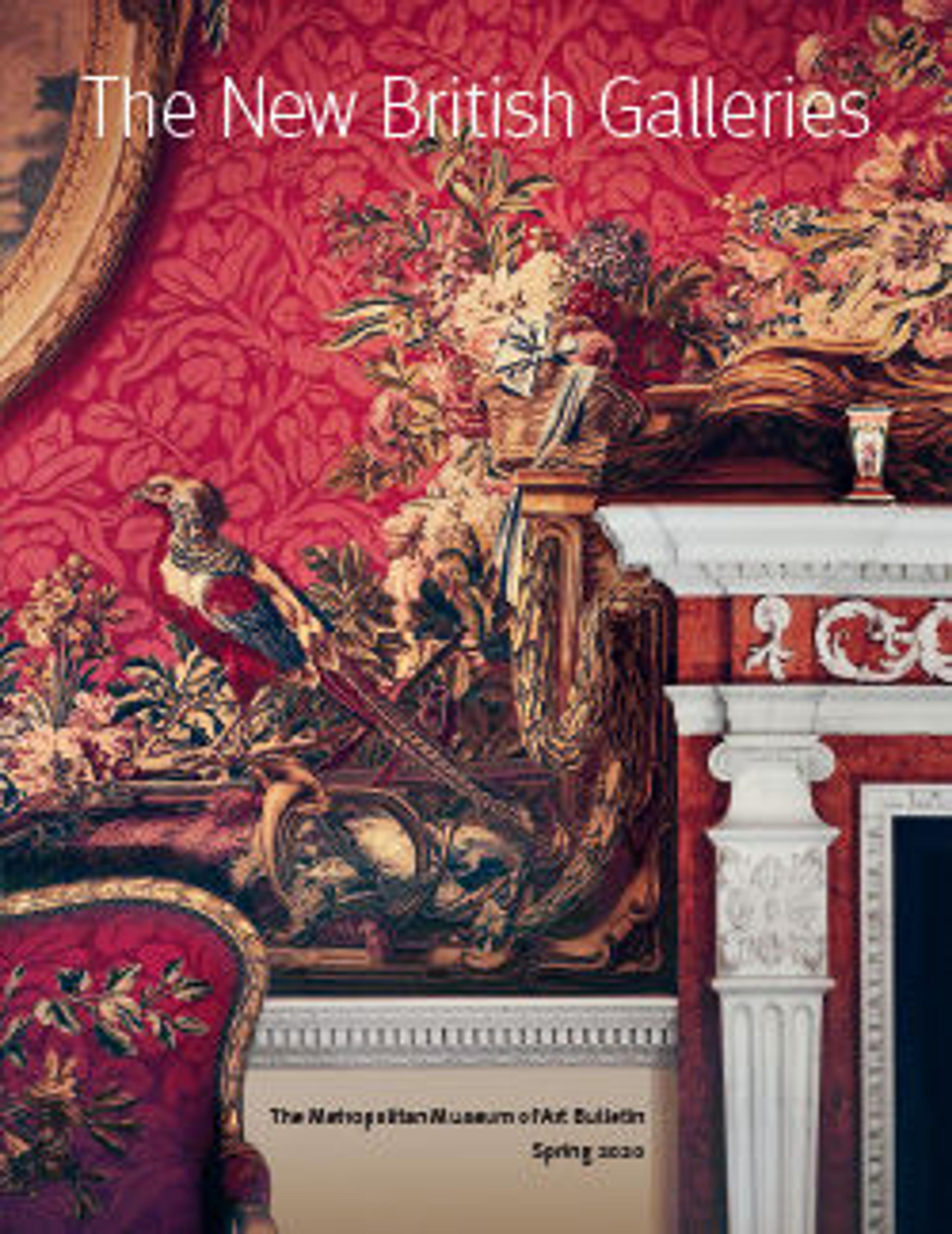Gilded-wood bench
A member of a wealthy banking family and sophisticated patron of the arts, Thomas Hope set out to influence and improve contemporary taste through the publication of his own collection in Household Furniture and Interior Decoration (1807).
This bench shows influence of Hope’s archeological taste and may have been part of the furnishings of his country house The Deepdene, Dorking, Surrey. It was possibly sold in the Christie’s sale of the Hope heirlooms held at Deepdene over six consecutive days in September of 1917. Lot 1044, sold on September 17th, consisted of: "a carved 4ft. 4in. gilt Egyptian pattern settee with scroll ends, on claw feet, and squab seat upholstered in gold satin damask".
This bench shows influence of Hope’s archeological taste and may have been part of the furnishings of his country house The Deepdene, Dorking, Surrey. It was possibly sold in the Christie’s sale of the Hope heirlooms held at Deepdene over six consecutive days in September of 1917. Lot 1044, sold on September 17th, consisted of: "a carved 4ft. 4in. gilt Egyptian pattern settee with scroll ends, on claw feet, and squab seat upholstered in gold satin damask".
Artwork Details
- Title: Gilded-wood bench
- Designer: Thomas Hope (British (born Holland), Amsterdam 1769–1831 London)
- Date: before 1807
- Culture: British
- Medium: Gilded mahogany, modern wool cover and silk trims
- Dimensions: wt. approximated: 29 9/16 × 50 × 24 1/2 in., 50 lb. (75.1 × 127 × 62.2 cm, 22.7 kg)
width at feet: 45 3/4 in. (116.2 cm) - Classification: Woodwork-Furniture
- Credit Line: Purchase, The James Parker Charitable Foundation Gift, 2014
- Object Number: 2014.136
- Curatorial Department: European Sculpture and Decorative Arts
More Artwork
Research Resources
The Met provides unparalleled resources for research and welcomes an international community of students and scholars. The Met's Open Access API is where creators and researchers can connect to the The Met collection. Open Access data and public domain images are available for unrestricted commercial and noncommercial use without permission or fee.
To request images under copyright and other restrictions, please use this Image Request form.
Feedback
We continue to research and examine historical and cultural context for objects in The Met collection. If you have comments or questions about this object record, please contact us using the form below. The Museum looks forward to receiving your comments.
